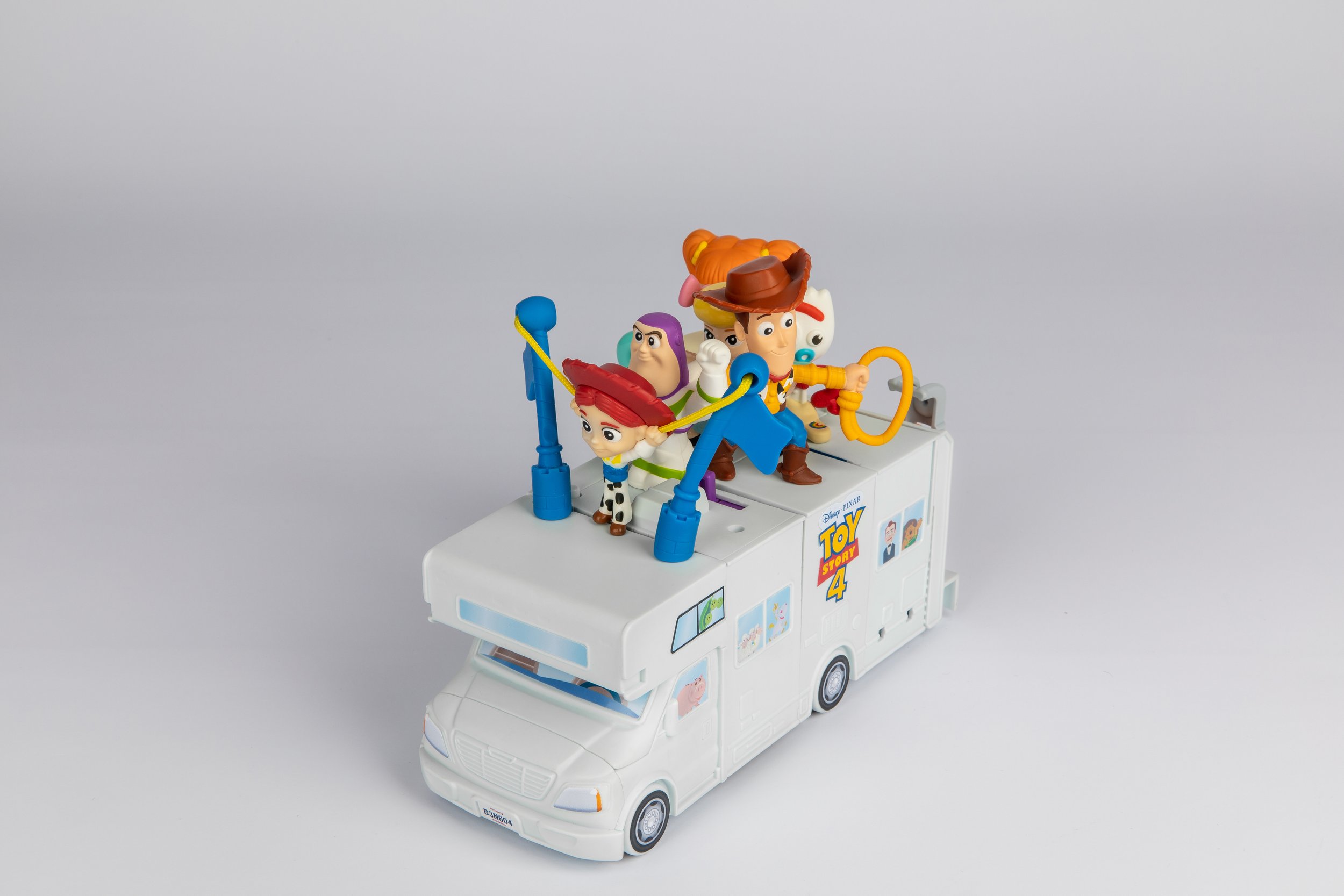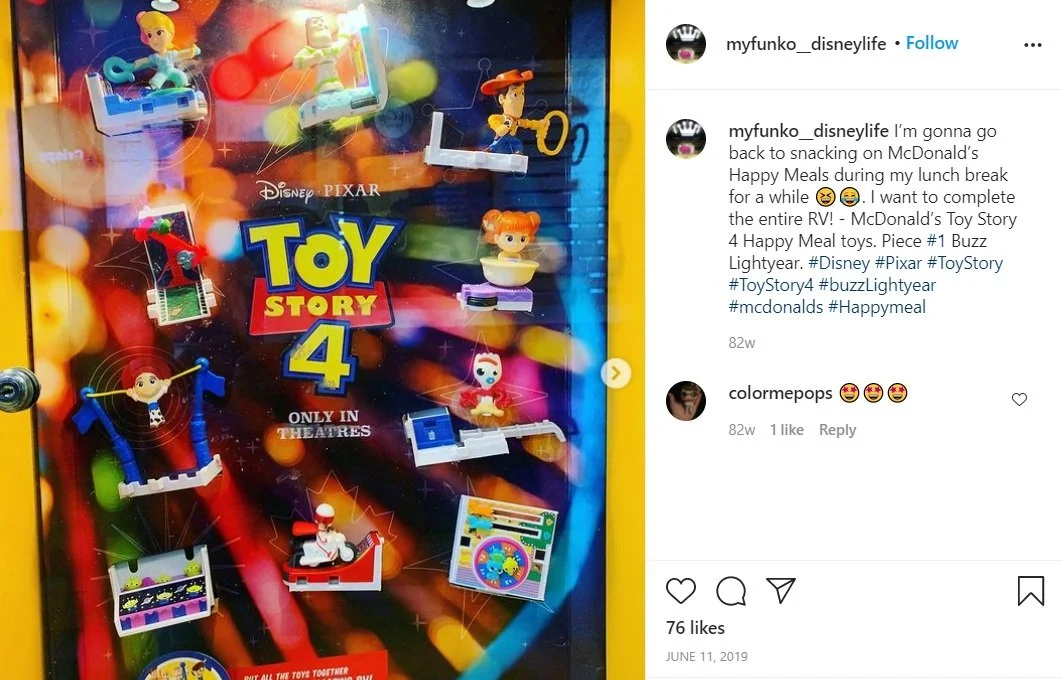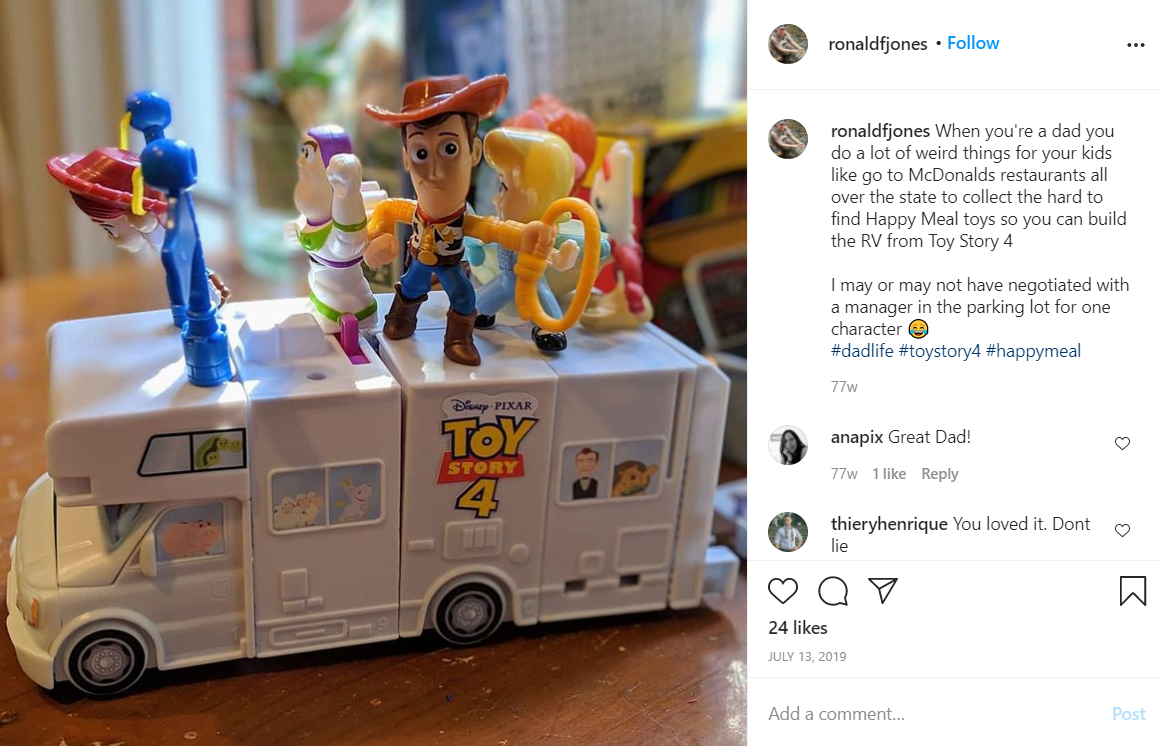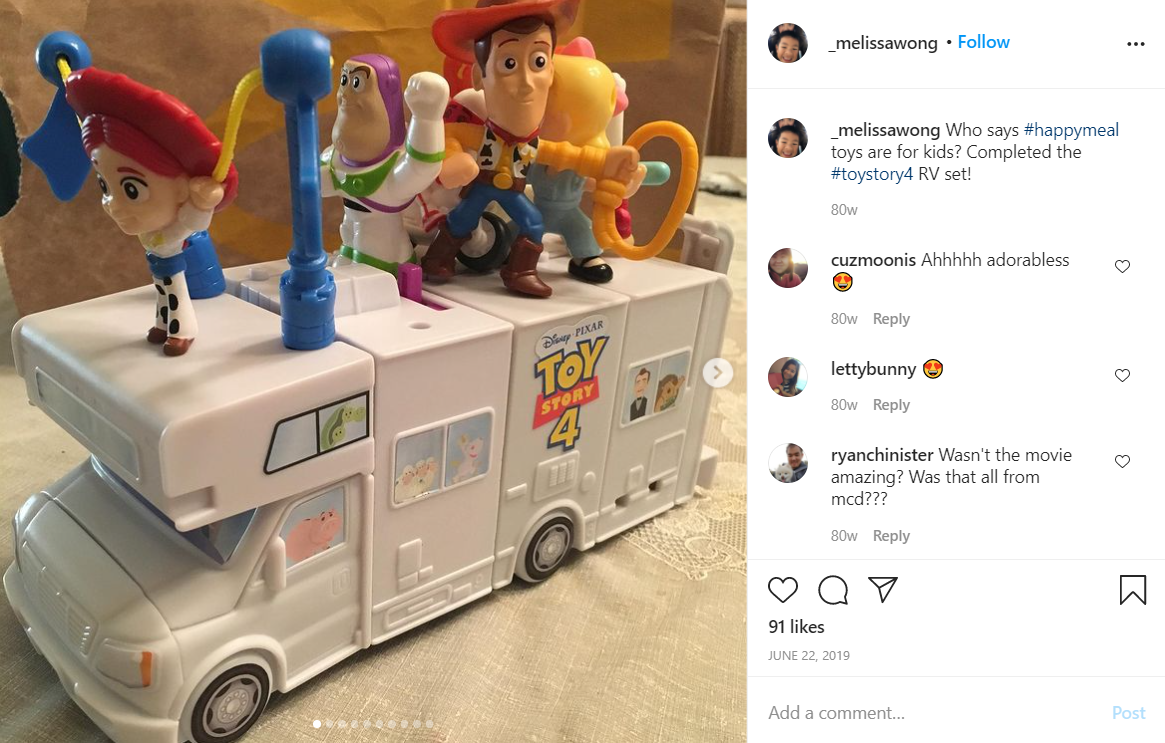The Adventure of Product Development
The Toy Story 4 Happy Meal campaign was fueled by a drive to push beyond perceived limits and unlock new forms of user engagement.
This campaign introduced a first-of-its-kind toy set that shattered expectations, achieving 200% of internal forecasts and sparking a lasting focus on toy lineups that connect and deliver richer, more engaging experiences.
Reinventing the Connect-to-Build
From the start of ideation for Toy Story 4, my self-imposed challenge was to deliver a toy lineup that, at the time, was thought to be impossible: a collection that could connect together to build a playset.
Initial proposals were dismissed due to what were perceived as contradictory requirements. Every toy would need to:
Offer strong standalone play
Connect with any other toy to form a functional mini-set
Assemble into a different complete, unified playset when the full collection was gathered
These challenges became the foundation for engineering a categorically new type of Happy Meal toy collection. Together with a colleague, I devised a clever engineering solution to address these contradictory requirements, creating a cohesive experience that satisfied all objectives.
-
Each design was crafted to be a fun stand-alone carnival game featuring a headlining character from the movie.
-
As more designs were collected, they could connect one-by-one to build an ever-growing carnival.
-
A completed carnival strip could transform into an entirely different set-piece from the movie—the RV.

Nearly any sub-set of toys could connect to form a carnival strip, from 2 toys up to the whole lineup of 10

The completed carnival strip could then be transformed into a functional rolling RV from the movie!
Overcoming Design Constraints
The RV build posed unique challenges: each toy's ‘standalone’ side needed to be engaging but their dimensions were restricted to fit properly into the assembled RV. By carefully balancing each toy’s dimensions, taking from one to give to another, and maximizing functionality within volume and budget constraints, each toy’s visual impact was maximized while supporting the limitations of the RV assembly.
Engineering Value Through Design
With the program’s ambitious design pushing it tightly against its budget, additional features would need to be achieved solely through creative engineering.
To give removable characters a ‘home’ on the assembled RV, I implemented a cost-free solution: adjusting tool parting lines on the RV’s roof to create mounting studs for each character.
Beyond this, cavity designs were creatively adjusted to amplify the presence of vibrant carnival colors on each toy.
Creative Legal Compliance
Legal compliance posed another challenge: visible legal engraving would need to be added to each toy while minimally compromising aesthetics.
Collaborating with our legal team unearthed a key detail - the toys only needed to arrive with this text visible. I proposed placing this text on the RV windows, which would later be covered by stickers—ensuring compliance while maintaining visual appeal.
A New Standard
When it launched, the Toy Story 4 Happy Meal program shattered expectations, performing at 200% of forecasts and selling out nationwide only halfway through the promotional window—a nearly unprecedented occurrence.
With a groundbreaking first-of-its-kind design, the toy line captivated audiences and drove excitement across news and social media, becoming one of the most successful Happy Meal campaigns of all time.
The legacy of this program continues to shape our creative approach, inspiring each new ideation with what started as a personal challenge:
“What could it connect to build?”
Something New
Up Next:
The invention of a new technology and a compelling vision of the product experience lead to a complete reimagining of the way kids connect with toys.

















